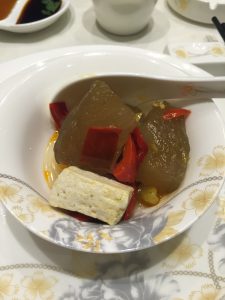An endogenous opiate high through exercise and pickled cabbage?
Fermented foods, neuroticism, and social anxiety: An interaction model.
Abstract
Animal models and clinical trials in humans suggest that probiotics can have an anxiolytic effect. However, no studies have examined the relationship between probiotics and social anxiety. Here we employ a cross-sectional approach to determine whether consumption of fermented foods likely to contain probiotics interacts with neuroticism to predict social anxiety symptoms. A sample of young adults (N=710, 445 female) completed self-report measures of fermented food consumption, neuroticism, and social anxiety. An interaction model, controlling for demographics, general consumption of healthful foods, and exercise frequency, showed that exercise frequency, neuroticism, and fermented food consumption significantly and independently predicted social anxiety. Moreover, fermented food consumption also interacted with neuroticism in predicting social anxiety. Specifically, for those high in neuroticism, higher frequency of fermented food consumption was associated with fewer symptoms of social anxiety. Taken together with previous studies, the results suggest that fermented foods that contain probiotics may have a protective effect against socialanxiety symptoms for those at higher genetic risk, as indexed by trait neuroticism. While additional research is necessary to determine the direction of causality, these results suggest that consumption of fermented foods that contain probiotics may serve as a low-risk intervention for reducing socialanxiety.
Copyright © 2015 Elsevier Ireland Ltd. All rights reserved.
KEYWORDS:
Exercise; Neuroticism; Probiotic; Social anxiety disorder; Social phobia
- PMID:
25998000
[PubMed – in process]



